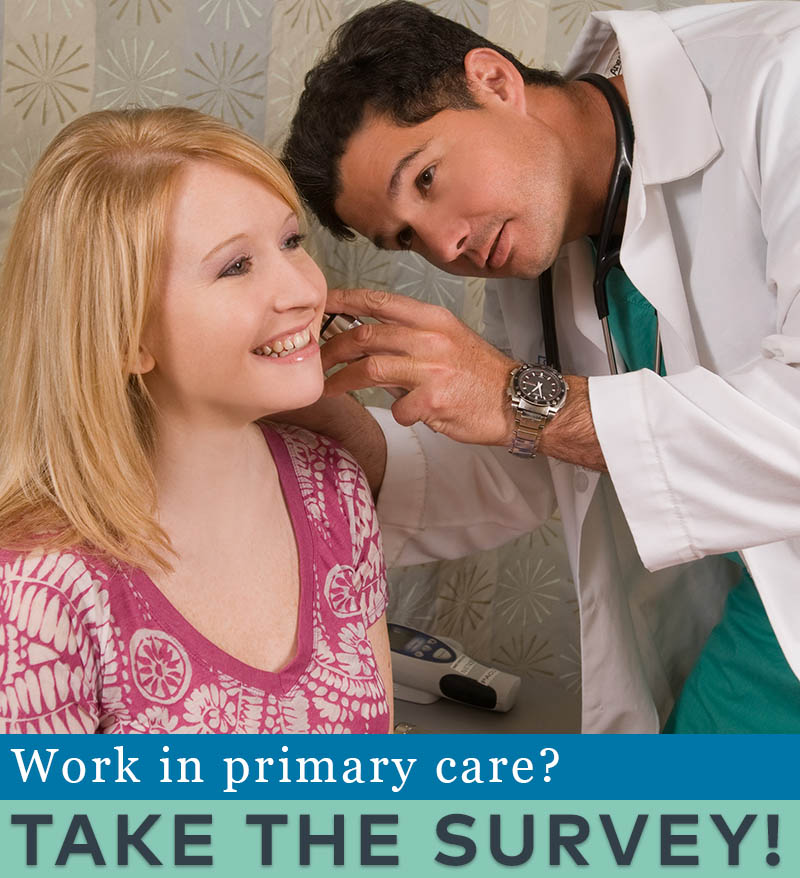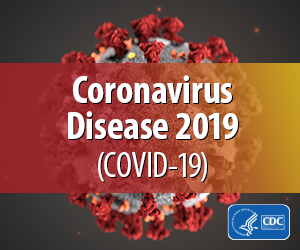Check back regularly for the latest survey results and updates.
For data from the previous survey, see Week 19 Results.
Who replied to the survey in Week 21?
The Primary Care Collaborative is partnering with the Larry A. Green Center to regularly survey primary care clinicians and patients to better understand the impact of COVID-19 in real time.
Over 450 primary care clinicians responded to the latest survey (series 21). Responses came from 47 states and the District of Columbia. Four states represent over half of the responses: Virginia, Texas, Oregon, and Washington. Over three-quarters of the responses (77%) were submitted by physicians (MD/DO); other certifications include: nurse practitioner (15%), PA (3%), PhD (1%), PharmD (0.4%) and other (4%). A majority of respondents’ specialty continues to be family medicine (69%) followed by internal medicine (15%), pediatrics (9%), geriatrics (5%), mental/behavioral health (1%), pharmacy (0.4%), and other (1%). Nearly a third (31%) of respondents work in a practice where more than half the patients are low-income. Thirty-seven percent of respondents said that a fifth or more of their practice is “value-based payment.” Just under a quarter of respondents work in a rural practice; 12% work in a community health center; and 7% are located in an office, school or college. A third of respondents (31%) work in a small (1-3 clinician) practice. A small percentage of respondents work in primary care/convenience care settings (8%) or direct primary care/membership settings (3%).
Series 21 of the clinician survey ran from September 18 to 21, 2020. Total responses: 457.
Results at a glance
-
The economic strain on primary care clinicians is being felt unevenly. Over a third (34%) of respondents say that women members of the office are losing more hours than men to pandemic-related child- or elder-care needs. And a quarter of clinicians say they now work “many hours” unpaid. Thirty-two percent report that, while their practice or health system received financial relief, clinicians and staff did not.
-
For some practices, revenue is now steadying; for others, the pandemic continues to pose serious financial risks. Almost a third (32%) of respondents say that in-person patient volume is within 10% of pre-pandemic levels, and a fifth say revenue is within 10%. Forty-five percent of surveyed clinicians say their practice did NOT furlough practice members during the pandemic, and only 11% report that their practice will soon need to repay pandemic-incurred loans. Still, 43% believe it will take more than one year to recover from financial losses incurred during the pandemic.
-
While practice finances may be stabilizing, clinicians’ mental and physical health is worsening. Over half (53%) of respondents say their level of mental and/or emotional exhaustion is at “an all-time high,” with 70% describing the need to be on “constant high alert” as mentally exhausting. Physical symptoms are present too: 35% report practice members feeling video fatigue including strained eyes, sore neck and low energy. Over a quarter (28%) report that their practice has lost team members (quitting, early retirement, etc.) because of COVID-19.
-
Many patients are experiencing secondary effects from the pandemic. A staggering 86% of respondents report that the mental health of their patients has declined during the pandemic. Patients’ physical well-being is also at risk: 41% of surveyed clinicians say their patients with chronic conditions are “in noticeably worse health” resulting from the pandemic; and 49% say their patients’ physical health has decreased during the pandemic.
-
Many—but far from all—primary care practices plan to provide rapid testing for the coronavirus. Forty-two percent of respondents say that, when available, their office will be providing rapid testing for the virus.
Learn more: Download the Series 21 Clinician Survey Executive Summary (includes select open-ended answers to survey questions)
Voices from the Primary Care Front Lines
To come
| Attachment | Size |
|---|---|
| 756.23 KB |

Are you a physician, nurse practitioner, or PA working in primary care?
Help PCC and the Larry A. Green Center track how your practice is responding to the COVID-19 outbreak by completing the Green Center's occasional survey.
The regular surveys are no longer being conducted.
COVID-19 Updates
December 4, 2021 | Washington Post
December 3, 2021 | CMS
November 22, 2021 | The Commonwealth Fund
November 17, 2021 | Primary Care Collaborative
October 18, 2021 | Primary Care Collaborative
- ‹ previous
- 3 of 39
- next ›
Recent News
April 22, 2024
March 19, 2024
February 28, 2024
February 22, 2024 | Conversations on Health Care
Statement from @AnnGreiner1: "Today’s new @CMSinnovates announcement is a promising step forward for #primarycare p… https://t.co/A6l5Rt9Fzb —
10 months 2 weeks ago
RT @LarryMcNeely1: @brookslasure says #primarycare relationship is foundation of care...announcing the "Making Care Primary" model from @C… —
10 months 2 weeks ago
RT @LarryMcNeely1: stressing alignment w Medicaid. 8 States participating including CO, NM, MA. —
10 months 2 weeks ago
Secondary menu
Copyright © 2024 Primary Care Collaborative




